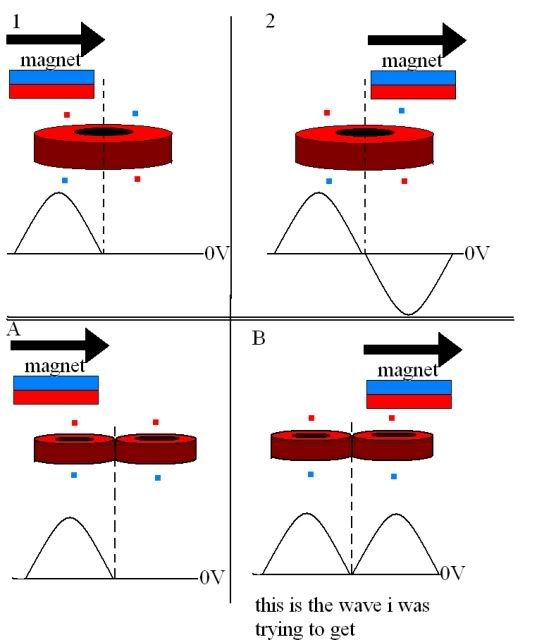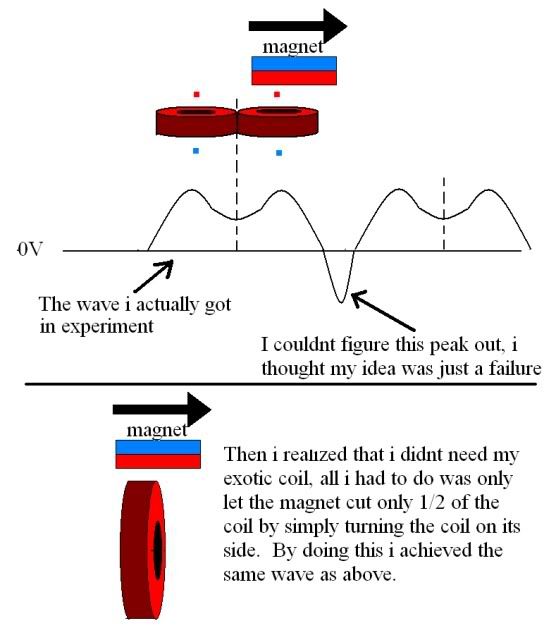Hmm... so you think the motor is providing the dc triggering for the transformer primary. Well thats a great idea but it doesnt appear to me that that is the exact opperation in that particular video. Im under the assumption that he is using the core as a transformer(primary and secondary windings) and that there is an external triggering circuit not showed in the vid. I could understand using the motor with a rotor attached onto it that would provid a trigger signal to the primary transformer winding using halls, opto, reeds, ect. and then the motor inself driven from the secondary. But if your implying the motor is in series with the primary transformer winding and also running off the secondary winding at the same time..... well i have no idea as to how that would work.. but maybe Yes a dc motor in series would definatly provide a dc signal to the transformer primary.
Yes a dc motor in series would definatly provide a dc signal to the transformer primary.
Of course my assumptions of what he is doing my be wrong, he may just be using the primary winding on the transformer and have the secondary shorted to itself, in which case the motor probably is in series with the primary. Not sure, interesting stuff though. Any idea on how this may relate to your design or are we getting to far off course of your original thread
 Yes a dc motor in series would definatly provide a dc signal to the transformer primary.
Yes a dc motor in series would definatly provide a dc signal to the transformer primary. Of course my assumptions of what he is doing my be wrong, he may just be using the primary winding on the transformer and have the secondary shorted to itself, in which case the motor probably is in series with the primary. Not sure, interesting stuff though. Any idea on how this may relate to your design or are we getting to far off course of your original thread

 lol... it's okay since this thread is close to its end as I have tested my motor on the vertical direction and it's behaving as a typical motor generator BEMF would using the 1 pound moved 1 foot in 1 second. I as up to 1 Watt after 6" inches
lol... it's okay since this thread is close to its end as I have tested my motor on the vertical direction and it's behaving as a typical motor generator BEMF would using the 1 pound moved 1 foot in 1 second. I as up to 1 Watt after 6" inches
 ... hope it helps others.
... hope it helps others.





Comment